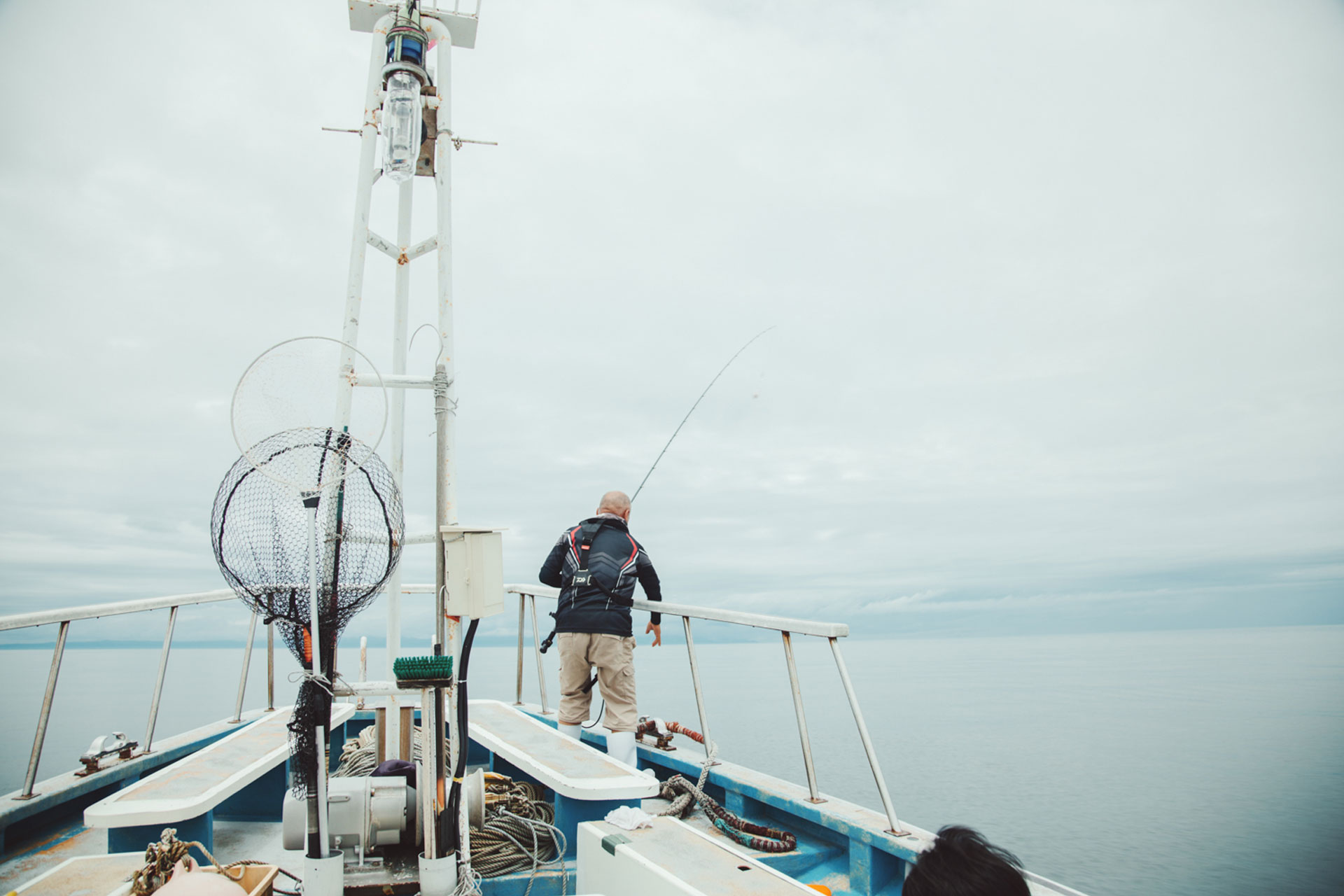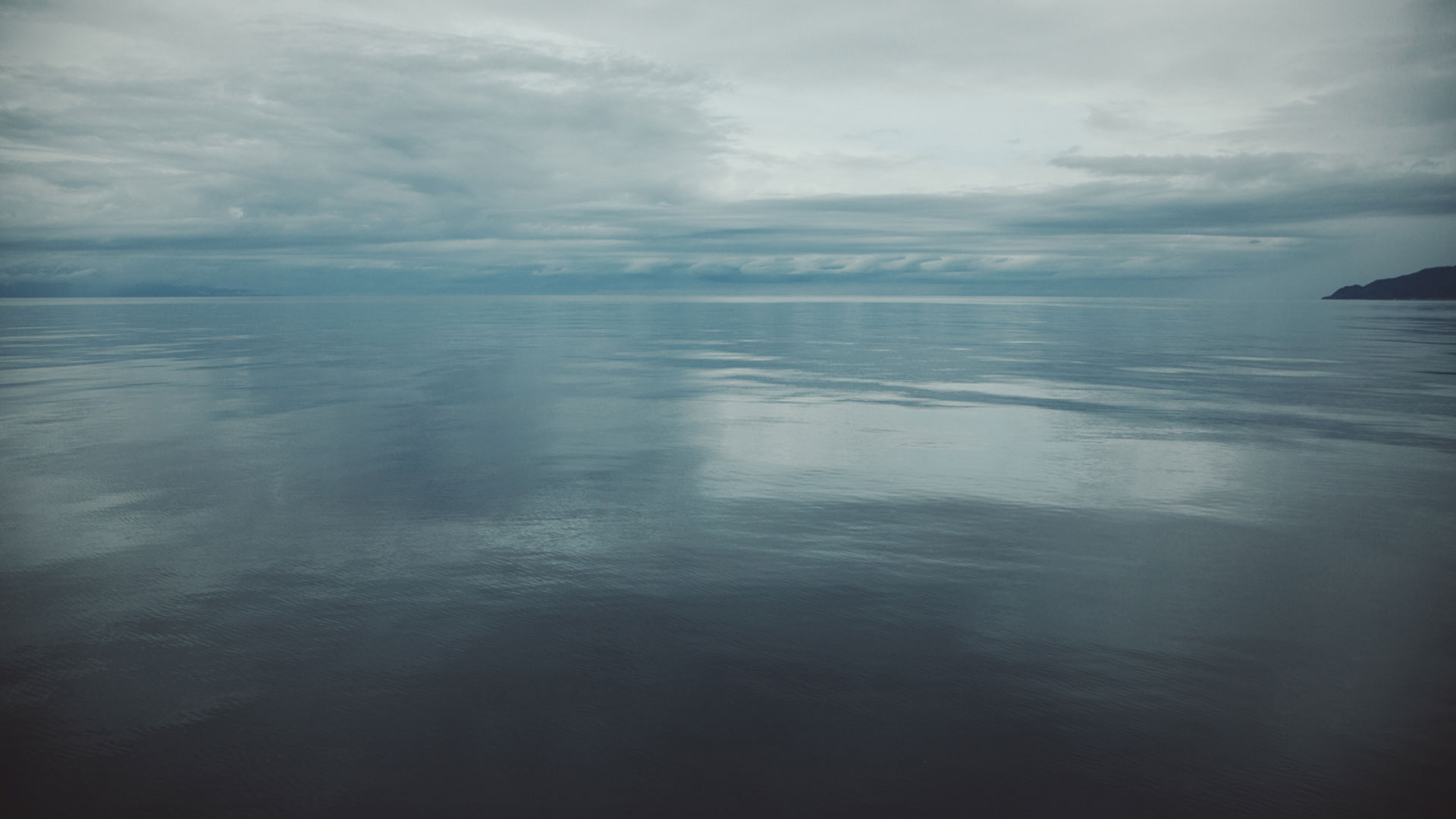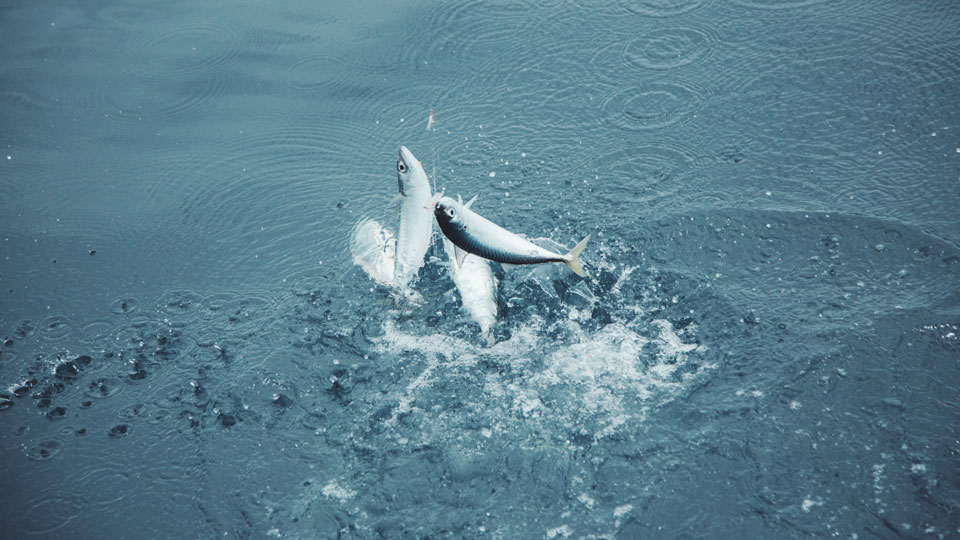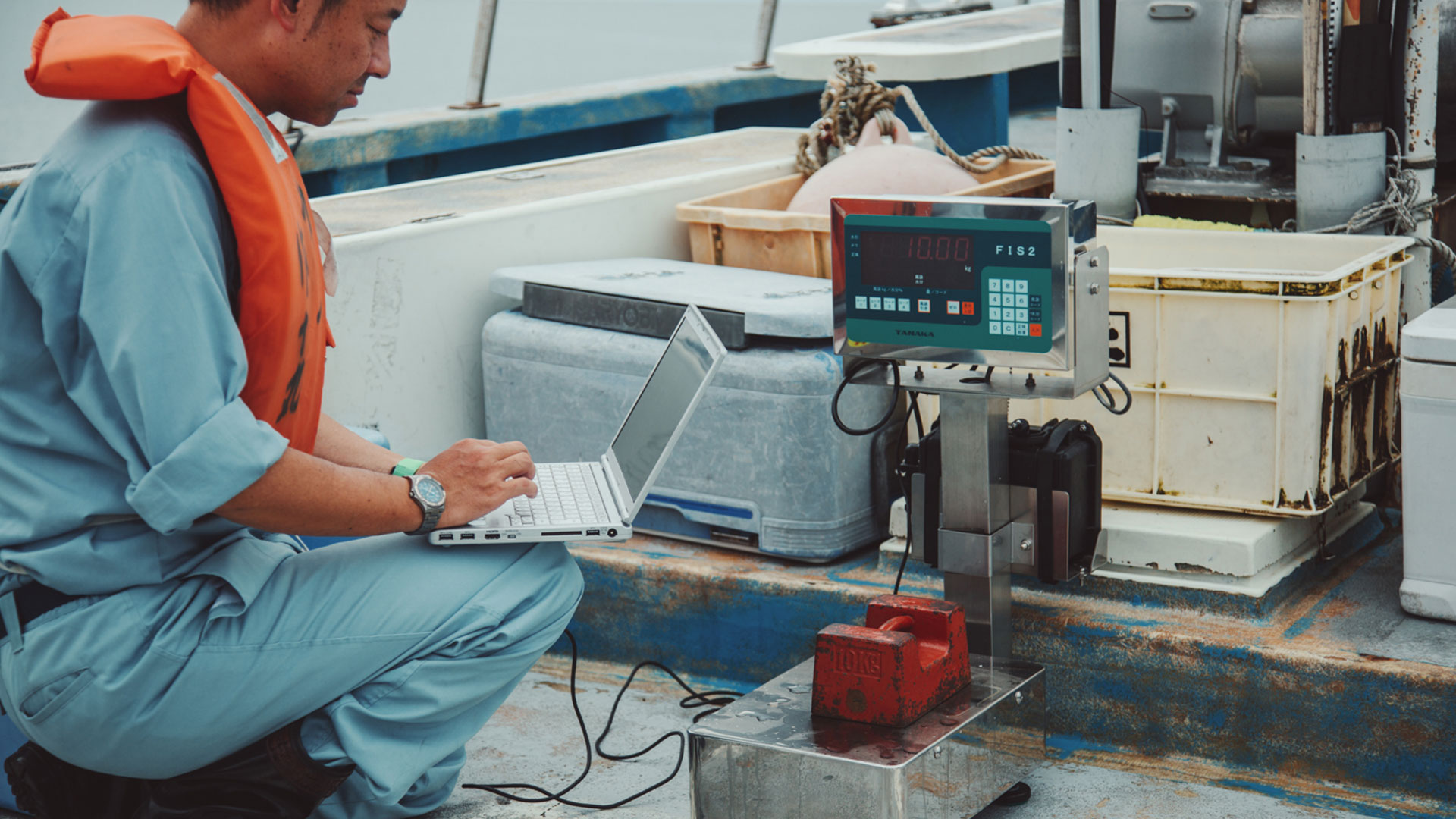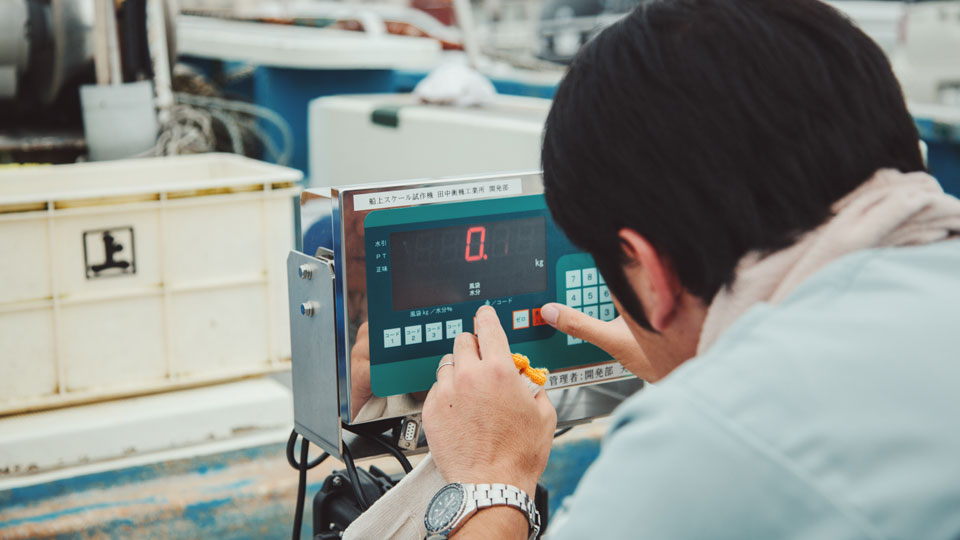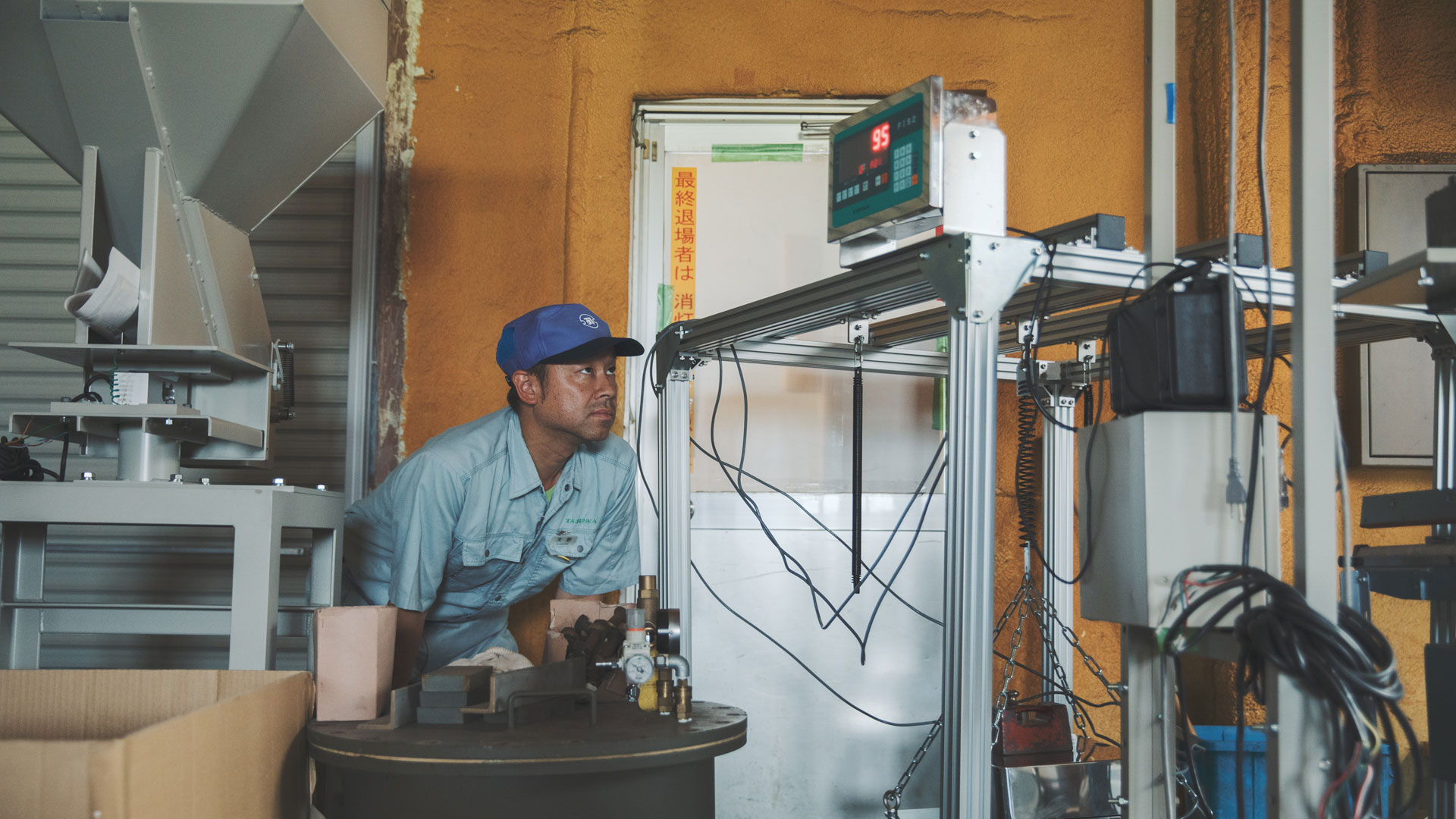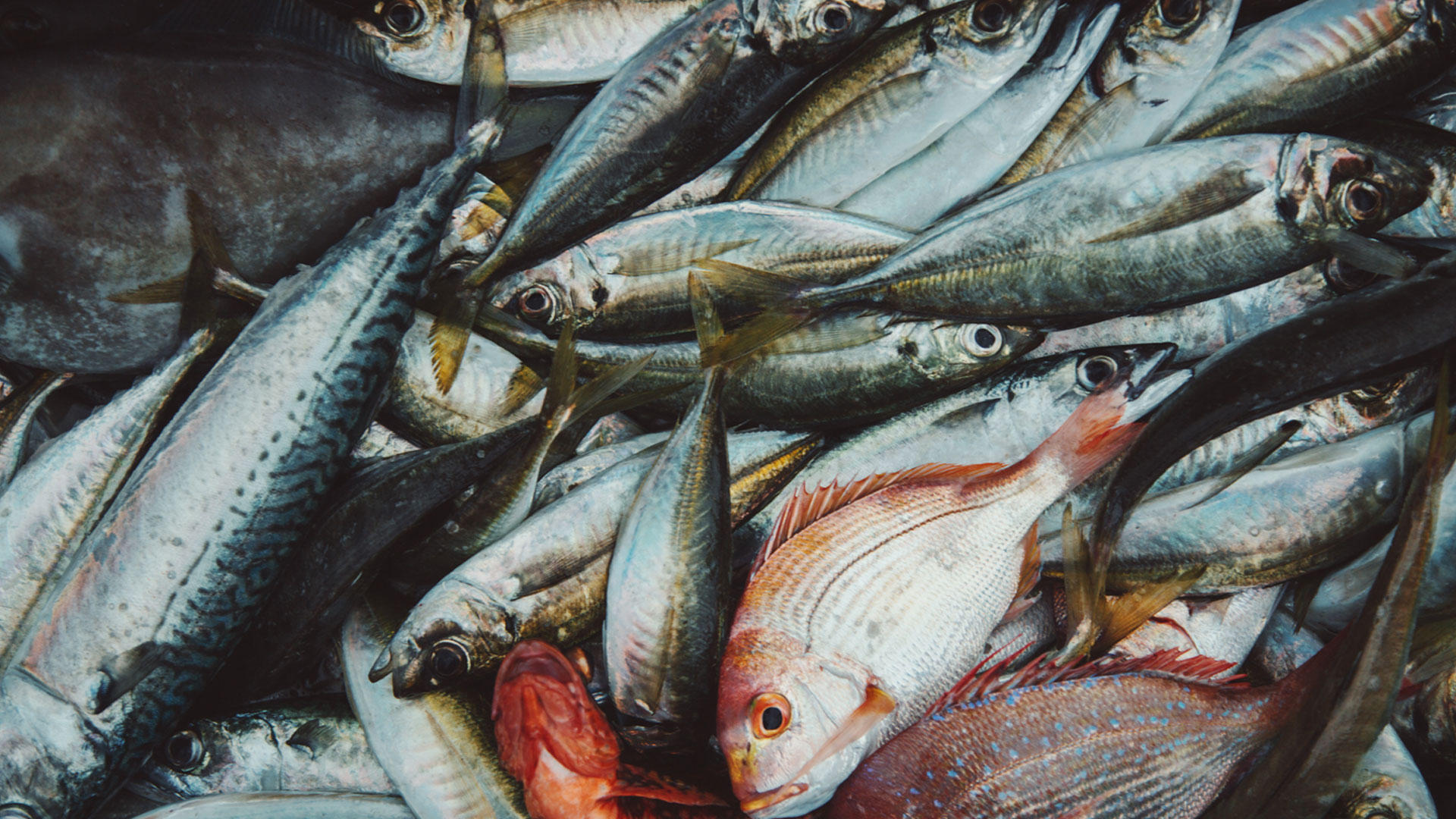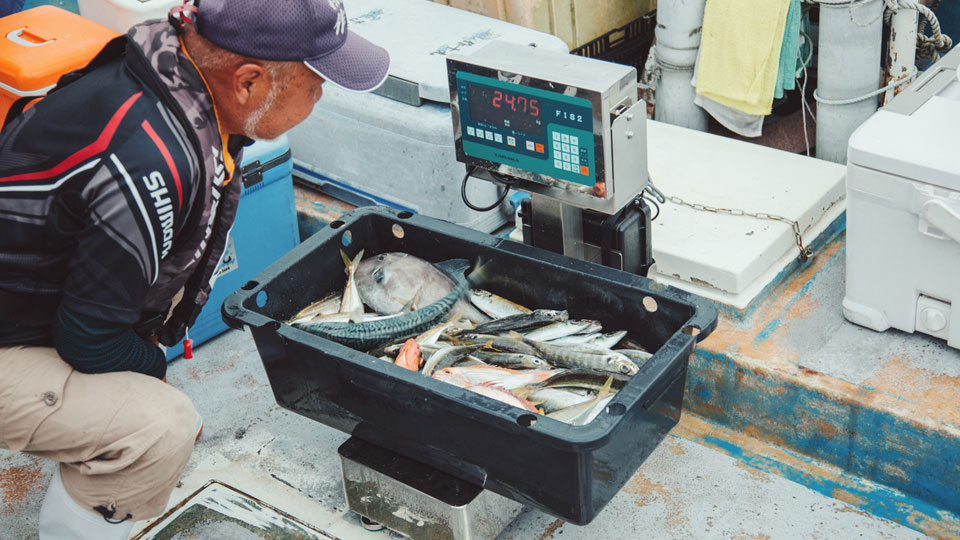For digital scales, it is extremely important that the installation location is level and stable. It is a critical pre-condition that the environment be free from swaying and vibration. However, since 2017, the challenge to overcome these common sense barriers has been in full swing at Tanaka Scale Works. XXX Amano of our development department led the way. He had this to say about the project: "For example, in offshore fishing, when fishermen operate across international water boundaries, they must apply for a quota in advance and be careful not to exceed that approved quota. Also, in recent years, there has been an increasing trend toward the need for digital weighing on ships, snice digital scales are more reliable than the mechanical ones. However, there were not any digital scales that could work on the open sea, which posed a problem for fishing organizations. We had done some initial investigations in the past on an onboard maritime digital scale, but we realized that it would be very difficult to develop one. However, we sensed that, as the IoT age has now arrived, the need for digital measurements on ships will become more meaningful. So, we put all of our effort into developing one." Although there are expensive and special products overseas, there are no digital onboard scales that achieve the required accuracy at a price range that most fishing boats can afford. At first, there was no clear path forward for achieving one either. However, wherever there is a need to measure something, you will find Tanaka's spirit as a scale manufacturer is up to the challenge. With that, Tanaka took the first step, and the development team began the process of trial and error.


